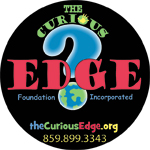Latest Research Fuels Curious Edge Program
By Kimberly Hudson
A review of my professional history shows significant markers – starting with my first job working with adults who had suffered neurological damage.
Through my understanding of how the brain functioned, I helped patients re-learn skills that we take for granted.
There were some neurological events that simply were too devastating and could not be rehabilitated.
Yet, other patients responded to treatment and targeted exercises that allowed the undamaged areas of the brain to learn a new skill.
Seeing patients make progress was gratifying.
I was excited that I had understood how the brain functioned.
This early professional experience helped build my neurological library.
Another marker on my timeline represents learning about building neural pathways to help a struggling student learn to read and spell.
As I integrated this into my practice, I was puzzled by the students who had cracked the code but struggled to retain their newly learned skills.
That led to my next marker – working memory.
Working memory is a system for storing and managing information required to carry out complex cognitive tasks such as learning, reasoning and comprehension.
These processing functions control our ability to encode, store and retrieve data.
Can working memory be tested? Yes.
Can working memory be improved? Yes.
Thus, the next marker on my timeline—neuroplasticity.
Decades of research have changed the long held belief that the brain could only be changed during a specific open window of development.
We now know that the brain can build new neural pathways and synapses in response to specific, targeted interventions.
With this under-standing of brain functioning, we have given students a toolbox full of new skills that are transforming learning outcomes.
The Curious Edge offers research-based interventions to improve working memory, auditory processing skills, auditory discrimination and visual processing skills.
This allows for improved overall processing speed, logic and reasoning.
These processes work together to allow students to integrate these skills and achieve greater academic success.
Give your child the proper tools for a more successful academic year.
Sources cited: (Journal of Neuroplasticity, Pearson Psychological, Medicine.net)

